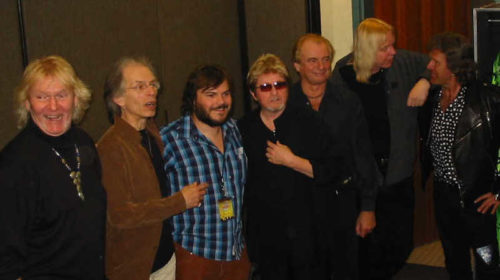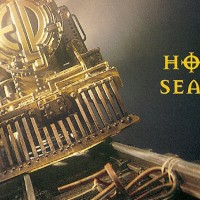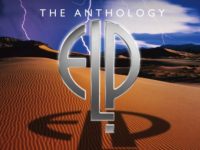
keithemerson.com
At the start of the 1970s I was in my senior year in high school. The first class of the day was music appreciation, which was taught by band instructor Mr. Jackson — a big fan of the jazz band Chase. He seemed genuinely interested in his students’ musical interests and, as our classroom was also the chorus/band rehearsal room, it had stair-step seating, isolated booths and a great sound system. We would bring in our favorite albums to listen to in high fidelity, in more than one sense of those words.
My classmates included some of my friends and fellow hippies, and our infatuations included the Beatles, Jimi Hendrix, and Led Zeppelin. There was a smattering of other individuals with their own musical interests, including one younger red-headed jock who seemed less interested in the class than he was in making it clear he wanted to beat me up — which fortunately never happened. His reason was that as a senior I would take cuts in the cafeteria line.
And then there was John Shannon. John was a guitar player who was part of a small, moody contingent of classmates who reeked of cerebral cynicism. Others in his orbit included drummer George and saxophonist Tim; the latter was nicknamed “Stems” by his pals, as back in the day getting stems (and seeds) in your ten-dollar lid was a drag. John’s musical interests seemed to be on a different plane where he listened to “unusual” genres, which included hardcore jazz and the Grateful Dead — not the folkie Dead I thought was their forte, but the early live and extended jams including “Dark Star” that I would not embrace for a couple more years. While I struggled to learn the simplest of Beatles songs on my S&H Green Stamps guitar, John and his friends were blazing through the likes of King Crimson’s “21st Century Schizoid Man” at parties — evidently with less than glowing success, as the kids at these parties were more interested in dancing than precise rendering of complex time signatures.
I’d known John throughout high school and, while we weren’t close friends back then, I had an admiration and respect for his musical acumen, even as he was vocal about his disinterest (and sometimes, depending on the artist, outright distaste) for mine, or at least some of it. Turns out there was some reciprocation as John didn’t think much of the Beatles until he heard my albums in class, particularly Abbey Road, which was their release at that time. Otherwise, we shared an offbeat sense of humor, and overall we got along pretty well.
On occasion, John would mention new albums by artists I hadn’t heard of. One of these releases was the first album from an act named Emerson Lake and Palmer. On his recommendation, I went out and bought it without having heard a note, eager to find something new and exciting.
John was on target with recommending this to me. The music was challenging and melodic, which was right in line with my continual developing musical interests. This was at a time where virtuosic instrumentalists in rock flourished, with long passages that were exciting and embraced without trepidation. I was already familiar with bass player and singer Greg Lake from the first King Crimson album, but wasn’t aware he was an accomplished guitar player. His vocals, both plaintive and soaring, combined with his melodic songwriting to fit right into the fabric of these lengthy compositions. I may had heard Carl Palmer in his other bands without knowing his name, but until this album I hadn’t experienced this level of precision, where feel wasn’t sacrificed — even if that wasn’t something I would have been able to articulate at the time.
But overall the bulk of the proceedings fell on keyboardist Keith Emerson. I don’t recall ever having heard the Nice, so this was my introduction to Keith’s stunning talents and range across a number of different keyboard instruments — and the weight of the music fell squarely on his shoulders, providing the sweetening while the rhythm section pumped through syncopations that ranged from straightforward to intricate. That isn’t to suggest Emerson was the star with the others supporting players, as Emerson Lake and Palmer was a band in the best and most literal sense of the word. But with Lake only occasionally leading on both acoustic and electric guitars (the only keyboard heard on “Lucky Man” is the synthesizer solo at the end of the track), it was Keith Emerson who would fill most of this first album, and those that followed. With his breadth of technique and depth of imagination Keith never disappointed.
Throughout the 1970s, I would eagerly await and purchase every album from ELP. I even bought the much-maligned Love Beach, where their label apparently decided the band needed to “update” their image by leaning on them to record shorter songs. The cover featured a photograph of the three in a tropical setting, shirts unbuttoned and sporting huge grins for the album cover. (Keith Emerson accurately nailed it in an interview with Progressive Ears, stating the cover depicted the trio “…looking like the Bee Gees and having a good laugh.”)
Naturally, I was eager to catch them in concert. My first Emerson Lake and Palmer show was in February 1974 at the Long Beach Arena in support of the Brain Salad Surgery tour. The high point was the “Karn Evil 9” suite, with the computer “exploding” at its conclusion (spewing a storm of confetti, if memory serves). In fact, watching his performances on video today shows how Keith Emerson made it seem deceptively effortless. A different revelation was that a performers need not be tied to their current roles, and I was stunned when Greg included a part of King Crimson’s “Epitaph” during his acoustic guitar solo segment.
The second — and last — time I saw ELP was in Toronto for the Works tour in July, 1977 at CNE Stadium. I felt that “Pirates” was one of their masterworks, and was eager to experience that composition live. Unfortunately, this was one of the dates where the orchestra was not present. Emerson Lake and Palmer had started this tour with the orchestra traveling with the band to each city, but considering the cost of transporting a large number of musicians most dates consisted of just the band, and the Toronto stop was one of them. For whatever reason, ELP didn’t take the approach that Yes did for their Yessymphonic tour of 2001, where only the conductor travelled, and the orchestra was contracted from the city hosting the performance.
Flash forward to Yes’ Ladder tour, where I was site manager for YesWorld. It was Yes’ three-day stint at the House of Blues in Hollywood in November 1999 where I first met Keith Emerson at an after-show party. We chatted about Yes’ show that evening, including a possible tour with Yes and ELP co-headlining, though that never came to be.
The second the last time I saw Keith was even more memorable. It was after a Yes performance at Anaheim Stadium on April 20, 2004. Having an All Access pass allowed me to hang out at the hall after the show was over and socialize with friends without being shooed away. On this evening, my wife Cindy and I were heading backstage when we ran into Emerson with a female companion (apologies but her name escapes me). Having remembered me from our first encounter at the House of Blues, he asked if I could help them get backstage to say hello to the band. I was more than happy to do this, given that my pass allowed me to escort anyone backstage.
Upon reaching the backstage area, there appeared to be more excitement than usual. We learned that Jack Black was present and was going to have some photographs taken with the members of Yes. What was significant about this meeting was that Black had been a proponent of prog, beyond what was scripted in School of Rock, even though it probably echoed his own sentiments.
It was a no-brainer to ask if Keith Emerson would be in the photos, and pictures were taken with everyone together and in various combinations. It’s especially gratifying to see Rick Wakeman and Keith together in these photos, considering they had an ongoing friendship and admiration for each other’s talents. They would speak on many occasions of working together, which, sadly never came to pass.
Learning of Keith’s death left me numb and shaken. Too often when a musical great dies the thing to say is that the music will live on. I thought of that when I learned the news but, while it’s true in this case, it seemed to ring hollow, and does little to help deal with the loss — especially given the way Keith exited this world.
Having said that, there is no denying his legacy. With ELP, Keith Emerson embraced numerous musical styles and genres, many times putting a different spin on others’ compositions (including Copeland’s “Hoedown,” Mussorgsky’s “Pictures at an Exhibition”). This distinguished them from their contemporaries who may have adapted others’ songs early in their careers but ultimately abandoned them. Those classics informed ELP’s own originals, taking their fans on exciting musical journeys that may have shared similarities with their prog brethren but demonstrated how they proudly stood apart.
The news of Keith Emerson’s demise brought back how I learned about Emerson Lake and Palmer. I reconnected with John Shannon a few years ago. Although in high school we were more acquaintances than pals, we found that bit had flipped; we communicate regularly and I cherish his friendship today.
Would I have learned about ELP without John’s recommendation? Maybe. But that doesn’t change the fact that John’s casual comment that I check out this group put me on the path for a lasting passion for the wonderful music of a great band — and for Keith Emerson, one of the most talented musicians to ever walk this earth.
Special thanks to John Shannon: beyond cluing me to ELP, he also provided details for this article. Feature photo by Will Alexander, courtesy of keithemerson.com.
©2016 Mike Tiano. All Rights Reserved.
- Remembering Billy James: ‘He Was One of the Good Ones’ - May 15, 2025
- ‘Becoming Led Zeppelin’ (2025): Movie Review - March 11, 2025
- Grateful Dead’s Kennedy Center Honors: What Was Missed - January 27, 2025




Even though I’m a guitarist since the 70’s and Steve Howe is my guru, Keith’s music and playing were transcendent. I don’t think it’s an overestimation to say that he was 1 in a billion, one of the greatest musicians to ever inhabit the planet. ELP’s music still amazes, inspires and humbles me even after 45 years.
Thank you Mike for sharing such delightful memories. I think the reason why many of us struggle with Keith loss is because he was a special key ingredient during our lives, just as you had mentioned. From our early days in high school on up to our senior years, Keith’s presence certainly made our lives a lot more enjoyable!
Exactly right. There is a drawing of Keith framed, sitting behind me that I did in College. ELP has continued to be a part of my life all these years, as well as Keith’s efforts recently. He is greatly missed.
Nice story. Very interesting to read someone’s feedback on such a journey, indeed!